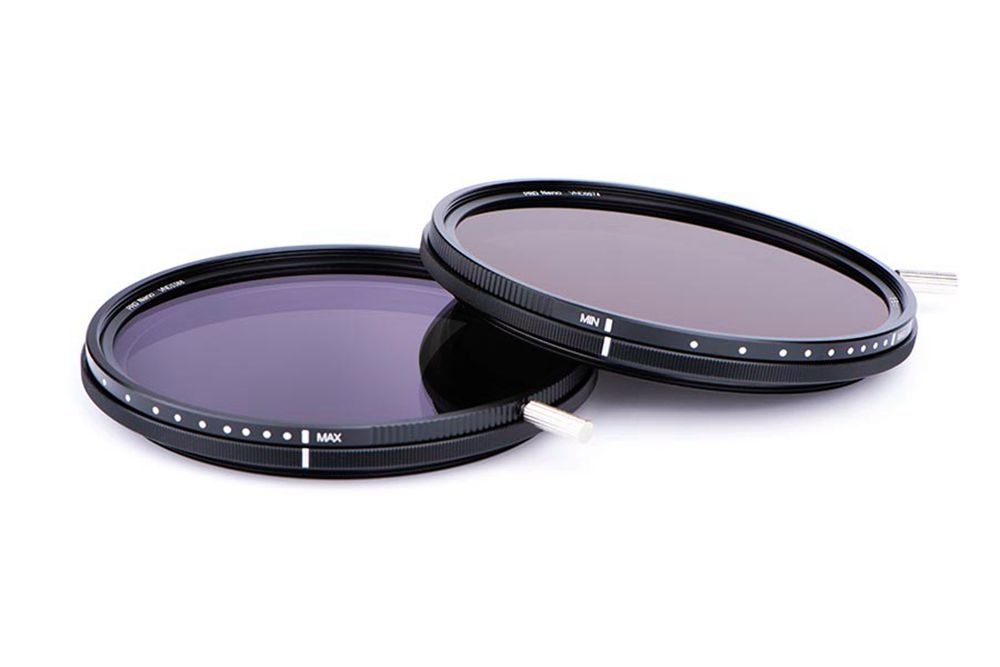Over the last few months, we have teamed up with landscape photographer Elia Locardi for a free 8 part video tutorial series on how to improve your landscape photographs using a variety of different NiSi filters. Today we take you behind the scenes on the making of this landscape series and show you some of our favorite gear used in the production. NiSi is also giving away a set of variable ND filters in this week's contest!
Over the years we have worked with Elia Locardi extensively producing his acclaimed landscape tutorials Photographing the World. As we've traveled all over Asia, Europe, North and South America, and New Zealand, the gear we have taken with us has changed tremendously over the years. In the past we have tried to balance having a lightweight kit that allows for easy travel while also having professional gear that produces great cinematic results. Sometimes those two goals are at odds but each time we pack up for another adventure, we always re evaluate every piece of gear placed in our carry on bags. Needless to say, each year we are more and more excited with our video and photo setup and the quality results we can get with less and less gear.
In the last 6 episodes of Elia's long exposure tutorial, you've seen how Elia uses everything from solid neutral density filters, graduated neutral density filters, circular polarizers, and even NiSi's brand new Natural Night filter to produce dramatic and perfectly exposed landscape photographs. In this episode, we wanted to share with you how we used a few of NiSi's 1.5 - 5 stop Variable Neutral Density filters to help make Elia's adventure look as good as possible for video.

As most photographers and videographers know, there are 3 unique ways to control exposure: aperture, shutter speed, and ISO. When shooting still images, most photographers primarily focus on picking an aperture for an artistic look and then setting a shutter speed that's fast enough to allow a sharp image handheld (although the shutter can be slowed for certain effects too).
When shooting video, the shutter speed can make a huge difference in how your overall footage looks and feels. If the shutter is too fast, say 1/1600th of a second, fast moving motion sometimes looks too clean, sharp, and unnatural. Most film makers follow the 180 degree shutter rule which is summarized by the equation 1/shutter speed x 2. If you are shooting at 24 frames per second, your shutter speed would typically be 1/50th or 1/60th of a second. This allows every one of your 24 frames in 1 second to have just enough motion blur to make the footage look smooth and natural. Of course these rules are often broken but picking a specific shutter speed is an important decision when creating the aesthetic of your film.

The problem with the 180 degree rule is that even with your camera set to its lowest ISO setting, when shooting wide open with apertures at f/1.4 or f/2.8 in bright sunlight, there is simply too much light entering into the lens to produce a correct exposure. This is where variable neutral density filters come in. These filters add density or darkness to your lens and allow you to expose your scene even darker while maintaining the same shutter speed and aperture. While solid neutral density filters can be super helpful, having a single variable neutral density filter on your lens at all times will allow you to change your exposure much more quickly than carrying and changing out multiple individual filters every time the lighting condition changes. In a pinch, you can even rack your exposure manually with a smooth variable ND filter and get a smoother effect than trying to change the shutter or aperture on a non professional cinema camera setup.
For this reason, we always like to carry a good variable neutral density filter in our bag and it was great testing out the new NiSi 1.5 - 5 stop variable ND filter on this project. If you want to get your own copy of this filter, make sure you enter the contest below and stay tuned because we have one final video left in this series that we will be releasing after the New Year.
Don't forget to enter this new contest and follow along with this series as we explore more of Puerto Rico and discover more about long exposure photography. If you are new to photography and want to dive deep into my full blown workflow as I travel around the globe with the guys from Fstoppers, be sure to check out my series Photographing the World.






The stuff Lee was saying in this video was pretty bad. For the 180 degree shutter angle, you shoot at 1/48 second and not 1/50. Lee should have gotten the FX3 which would have done the 180 degree shutter. For 60fps, the shutter should have been set to 1/120 of a second and not 1/60. And then, how do you fit a 60 fps video into a 24fps timeline without having to throw out frames?
1/50 is close enough to 1/48. I seriously doubt you can tell the difference, especially for Youtube, tutorials, documentation, etc.
--- "And then, how do you fit a 60 fps video into a 24fps timeline without having to throw out frames?"
Maybe?
https://youtu.be/qAVfIQ2G7Io?t=537
Yeah, when he said 60fps @ 1/60 I said to myself, huh.